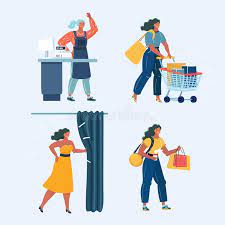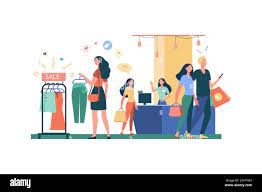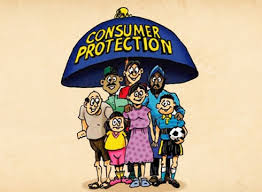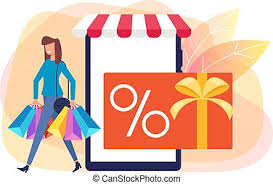Special Day: World Consumer Right's Day 2022
5 minuteRead

By Samyati Mohanty
The ultimate purpose of World Consumer Rights Day is to guarantee that customers have all of the information they need to make an informed decision, which takes place every year on March 15. Consumers International was created in 1960 as a global federation of consumer organisations to serve as an independent and effective voice for consumers.
Since the year 1983, March 15 has been observed as World Consumer Rights Day, commemorating President John F. Kennedy's address on that date in 1962. In this lecture, he established four fundamental consumer rights: the right to safety, the right to information, the freedom to choose, and the right to be heard.
Since then, World Consumer Rights Day has grown in popularity, and it is now celebrated annually on a different theme. For example, the project 'Tackling Plastic Pollution' aimed to raise awareness of sustainable consumerism and behaviours by focusing on the production and usage of plastics, as well as their environmental impact. Knowing our consumer rights is critical since we can only tell whether we are being duped or deceived if we are aware of our rights. Above all, we have the power to speak up and take legal action against any purchase of a product or service that violates our rights.
People's power, to say the least!
When we talk in terms of the status of India in women consumerism, the most prevailing problem lies in the public-private dichotomy. Where men are considered suitable and acceptable to fit into the public sphere, and on the other hand women are expected to accommodate to the private sphere. Interestingly, the consumer feminism, which is monolithic and materially driven, encourages each and every women to march to the top by becoming financially independent. Added to that, the celebrity culture also plays an influential part. Not only this but also it promotes the idea that if women, as individuals, can get better in their financial position, the feminist dream would take a leap.
During the colonial period, when members of the families were major consumers of the total produce, a gender division of labor prevailed. In which, men supplied the raw materials and women transformed them into commodities for consumption. For example- harvesting wheat, pulses, cotton and hunting down animals were performed by men, and commodifying them into cooked food and stitched clothes were performed by women. Struggling with these age-old thought process, the women of 21st century are breaking the barriers by taking a stand for their rights and wishes. Now-a-days, the trend of female consumption is largely the result of female-powered households, in which women are responsible for between 70-80% of all consumer purchases accounting for themselves, their partners, their children, and other miscellaneous household requirements. So this consumer right’s day let’s know how women can lead a sustainable lifestyle being an aware consumer.
Consumer rights refer to a person's right to know about the quality, purity, price, and standard of various items, goods, and services before purchasing them. Did you know that you have the right to file a complaint at any time and from anywhere as a consumer? The majority of women are unaware of their rights as consumers, thus by commemorating this day, we hope to raise awareness of their right to demand protection and avoid being victimised in the marketplace.
Read on to know why women consumers really matter and what are the measures taken to encourage women-consumers.
As more women enter the job, earn higher salaries, and become more self-sufficient, an increasing number of them are following trends and purchasing flats, automobiles, two-wheelers, and insurance policies, to mention a few. Until recently, much fewer women were able to do so. They couldn't afford these items, or they didn't have the freedom to make such decisions, or both. However, a new socioeconomic paradigm that empowers women is rapidly emerging, particularly in metropolitan India. Beauty/personal care and clothes, health, home décor/furniture, and household products were the top five product categories where they stated they preferred a female-focused approach.
Women will have a huge impact as consumers, according to a report commissioned by private equity firm Everstone Capital, resulting in India becoming 25% wealthier by 2025. According to the estimate, India's working-age population would increase by a third over the next 30 years. Within that broad category, increase in the number of women entering the labour force (38%) will outpace that of men (33 percent ). The woman's part of household income rises as income rises. Furthermore, women's proclivity to purchase for themselves, as well as their decision-making for the rest of the family, has increased.
There are still various lacunae which are caused by our society. It is seen that, although women are venturing into lifestyle products and increasing their purchasing power, still majority of them tend to own vehicles which are registered in their father or spouse's name. The modeling of two-wheelers are even designed in such a way that women with Indian attire can comfortably ride them. Insurance companies tend to launch women-centric schemes, considering them as better targets, as they live longer, are less prone to cardiac alignments- which are costly, and are even less likely to injure themselves or die in an accident.
Some companies appreciate women's behaviour with respect to their products and services. HDFC Bank prefers women consumers because of lower default chances and also because women use the loans more productively than their counterparts. Yet the prevailing stereotypical notion of "women buyers doesn't understand technology" is very wrong and outdated.
All women need is, better treatment by the society which would generate better experience for them regarding product values. Women, not only should be encouraged for basic education but also should be made aware about consumerism. Being the biggest consumer of goods and services, the women-centric products should be made easily available, affordable and reachable. Irrespective of gender, people should be made equally accountable for the process of justice. And the law makers of consumerism should ensure involvement of both the parties for a fair, reasonable and equitable distribution of goods and services. Women should work on themselves and acquire all the possible knowledge to increase their purchasing power. And not to forget, the most awaited thing would be to hear "On your periods? Here is your dark chocolate- free with a packet of sanitary item" :))
Write, Record and Answer! Consume Unlimited Content! All you need to do is sign in and its absolutely free!
Continue with one click!!By signing up, you agree to our Terms and Conditions and Privacy Policy.














